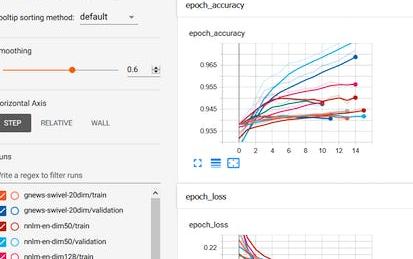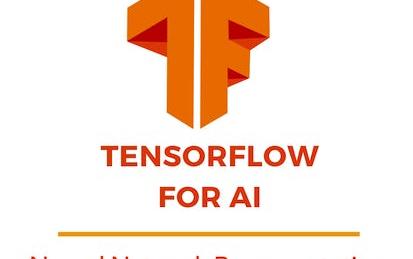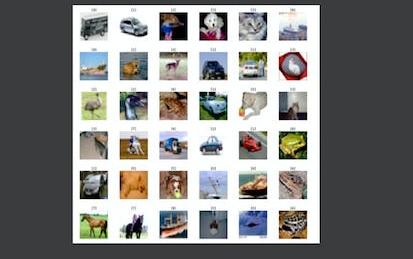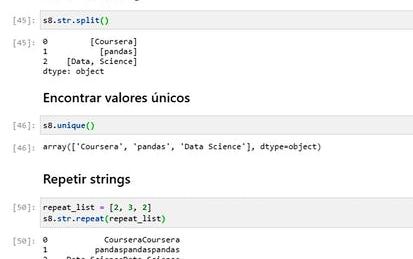

دوراتنا

Neural Style Transfer with TensorFlow
In this 2-hour long project-based course, you will learn the basics of Neural Style Transfer with TensorFlow. Neural Style Transfer is a technique to apply stylistic features of a Style image onto a Content image while retaining the Content's overall structure and complex features. We will see how to create content and style models, compute content and style costs and ultimately run a training loop to optimize a proposed image which retains content features while imparting stylistic features from another image.
-
Course by

-
 Self Paced
Self Paced
-
 2 ساعات
2 ساعات
-
 الإنجليزية
الإنجليزية

Transfer Learning for NLP with TensorFlow Hub
This is a hands-on project on transfer learning for natural language processing with TensorFlow and TF Hub.
-
Course by

-
 Self Paced
Self Paced
-
 2 ساعات
2 ساعات
-
 الإنجليزية
الإنجليزية

Generative Deep Learning with TensorFlow
In this course, you will: a) Learn neural style transfer using transfer learning: extract the content of an image (eg. swan), and the style of a painting (eg. cubist or impressionist), and combine the content and style into a new image.
-
Course by

-
 Self Paced
Self Paced
-
 17 ساعات
17 ساعات
-
 الإنجليزية
الإنجليزية

Orchestrating a TFX Pipeline with Airflow
This is a self-paced lab that takes place in the Google Cloud console. In this lab, you'll learn to create your own machine learning pipelines using TensorFlow Extended (TFX) and Apache Airflow as the orchestrator.
-
Course by

-
 Self Paced
Self Paced
-
 2 ساعات
2 ساعات
-
 الإنجليزية
الإنجليزية

TensorFlow for AI: Neural Network Representation
This guided project course is part of the "Tensorflow for AI" series, and this series presents material that builds on the first course of DeepLearning.AI TensorFlow Developer Professional Certificate, which will help learners reinforce their skills and build more projects with Tensorflow.
-
Course by

-
 Self Paced
Self Paced
-
 3 ساعات
3 ساعات
-
 الإنجليزية
الإنجليزية

Cifar-10 Image Classification with Keras and Tensorflow 2.0
In this guided project, we will build, train, and test a deep neural network model to classify low-resolution images containing airplanes, cars, birds, cats, ships, and trucks in Keras and Tensorflow 2.0. We will use Cifar-10 which is a benchmark dataset that stands for the Canadian Institute For Advanced Research (CIFAR) and contains 60,000 32x32 color images. This project is practical and directly applicable to many industries.
-
Course by

-
 Self Paced
Self Paced
-
 2 ساعات
2 ساعات
-
 الإنجليزية
الإنجليزية

Practical Python for AI Coding 2
Introduction video : https://youtu.be/TRhwIHvehR0 This course is for a complete novice of Python coding, so no prior knowledge or experience in software coding is required. This course selects, introduces and explains Python syntaxes, functions and libraries that were frequently used in AI coding. In addition, this course introduces vital syntaxes, and functions often used in AI coding and explains the complementary relationship among NumPy, Pandas and TensorFlow, so this course is helpful for even seasoned python users.
-
Course by

-
 Self Paced
Self Paced
-
 9 ساعات
9 ساعات
-
 الإنجليزية
الإنجليزية

Creating Multi Task Models With Keras
In this 1 hour long guided project, you will learn to create and train multi-task, multi-output models with Keras. You will learn to use Keras' functional API to create a multi output model which will be trained to learn two different labels given the same input example. The model will have one input but two outputs. A few of the shallow layers will be shared between the two outputs, you will also use a ResNet style skip connection in the model. If you are familiar with Keras, you have probably come across examples of models that are trained to perform multiple tasks.
-
Course by

-
 Self Paced
Self Paced
-
 3 ساعات
3 ساعات
-
 الإنجليزية
الإنجليزية

Create Machine Learning Models in Microsoft Azure
Machine learning is the foundation for predictive modeling and artificial intelligence. If you want to learn about both the underlying concepts and how to get into building models with the most common machine learning tools this path is for you. In this course, you will learn the core principles of machine learning and how to use common tools and frameworks to train, evaluate, and use machine learning models. This course is designed to prepare you for roles that include planning and creating a suitable working environment for data science workloads on Azure.
-
Course by

-
 Self Paced
Self Paced
-
 13 ساعات
13 ساعات
-
 الإنجليزية
الإنجليزية

Building Deep Learning Models with TensorFlow
The majority of data in the world is unlabeled and unstructured. Shallow neural networks cannot easily capture relevant structure in, for instance, images, sound, and textual data. Deep networks are capable of discovering hidden structures within this type of data. In this course you’ll use TensorFlow library to apply deep learning to different data types in order to solve real world problems.
-
Course by

-
 Self Paced
Self Paced
-
 7 ساعات
7 ساعات
-
 الإنجليزية
الإنجليزية

Natural Language Processing
Natural Language Processing (NLP) is a subfield of linguistics, computer science, and artificial intelligence that uses algorithms to interpret and manipulate human language. This technology is one of the most broadly applied areas of machine learning and is critical in effectively analyzing massive quantities of unstructured, text-heavy data.
-
Course by

-
 Self Paced
Self Paced
-
 الإنجليزية
الإنجليزية

Fake Instagram Profile Detector
In this hands-on project, we will build and train a simple artificial neural network model to detect spam/fake Instagram accounts. Fake and spam accounts are a major problem in social media. Many social media influencers use fake Instagram accounts to create an illusion of having so many social media followers. Fake accounts can be used to impersonate or catfish other people and be used to sell fake services/products.
By the end of this project, you will be able to:
- Understand the applications of Artificial Intelligence and Machine Learning techniques in the banking industry
-
Course by

-
 Self Paced
Self Paced
-
 4 ساعات
4 ساعات
-
 الإنجليزية
الإنجليزية

Build Multilayer Perceptron Models with Keras
In this 45-minute long project-based course, you will build and train a multilayer perceptronl (MLP) model using Keras, with Tensorflow as its backend. We will be working with the Reuters dataset, a set of short newswires and their topics, published by Reuters in 1986. It's a very simple, widely used toy dataset for text classification. There are 46 different topics, some of which are more represented than others. But each topic has at least 10 examples in the training set.
-
Course by

-
 3 ساعات
3 ساعات
-
 الإنجليزية
الإنجليزية

Deep Learning
The Deep Learning Specialization is a foundational program that will help you understand the capabilities, challenges, and consequences of deep learning and prepare you to participate in the development of leading-edge AI technology. In this Specialization, you will build and train neural network architectures such as Convolutional Neural Networks, Recurrent Neural Networks, LSTMs, Transformers, and learn how to make them better with strategies such as Dropout, BatchNorm, Xavier/He initialization, and more.
-
Course by

-
 التعلم الذاتي
التعلم الذاتي
-
 الإنجليزية
الإنجليزية

Deploy Models with TensorFlow Serving and Flask
In this 2-hour long project-based course, you will learn how to deploy TensorFlow models using TensorFlow Serving and Docker, and you will create a simple web application with Flask which will serve as an interface to get predictions from the served TensorFlow model.
-
Course by

-
 Self Paced
Self Paced
-
 3 ساعات
3 ساعات
-
 الإنجليزية
الإنجليزية

TensorFlow for AI: Get to Know Tensorflow
This guided project course is part of the "Tensorflow for AI" series, and this series presents material that builds on the first course of DeepLearning.AI TensorFlow Developer Professional Certificate offered at Coursera, which will help learners reinforce their skills and build more projects with Tensorflow.
-
Course by

-
 Self Paced
Self Paced
-
 3 ساعات
3 ساعات
-
 الإنجليزية
الإنجليزية

Hyperparameter Tuning with Neural Network Intelligence
In this 2-hour long guided project, we will learn the basics of using Microsoft's Neural Network Intelligence (NNI) toolkit and will use it to run a Hyperparameter tuning experiment on a Neural Network. NNI is an open source, AutoML toolkit created by Microsoft which can help machine learning practitioners automate Feature engineering, Hyperparameter tuning, Neural Architecture search and Model compression. In this guided project, we are going to take a look at using NNI to perform hyperparameter tuning.
-
Course by

-
 Self Paced
Self Paced
-
 3 ساعات
3 ساعات
-
 الإنجليزية
الإنجليزية

Deep Learning with Tensorflow
Much of theworld's data is unstructured. Think images, sound, and textual data. Learn how to apply Deep Learning with TensorFlow to this type of data to solve real-world problems.
-
Course by

-
 الإنجليزية
الإنجليزية

Microsoft Azure Data Scientist Associate (DP-100)
This Professional Certificate is intended for data scientists with existing knowledge of Python and machine learning frameworks like Scikit-Learn, PyTorch, and Tensorflow, who want to build and operate machine learning s…
-
Course by

-
 Self Paced
Self Paced
-
 الإنجليزية
الإنجليزية

Data Engineering, Big Data, and Machine Learning on GCP
This five-week, accelerated online specialization provides participants a hands-on introduction to designing and building data processing systems on Google Cloud Platform. Through a combination of presentations, demos, and hand-on labs, participants will learn how to design data processing systems, build end-to-end data pipelines, analyze data and carry out machine learning.
-
Course by

-
 Self Paced
Self Paced
-
 الإنجليزية
الإنجليزية

TensorFlow: Data and Deployment
Continue developing your skills in TensorFlow as you learn to navigate through a wide range of deployment scenarios and discover new ways to use data more effectively when training your machine learning models. In this four-course Specialization, you’ll learn how to get your machine learning models into the hands of real people on all kinds of devices. Start by understanding how to train and run machine learning models in browsers and in mobile applications.
-
Course by

-
 Self Paced
Self Paced
-
 الإنجليزية
الإنجليزية

Create Custom Layers in Keras
In this 1-hour long project-based course, you will learn how to create a custom layer in Keras, and create a model using the custom layer. In this project, we will create a simplified version of a Parametric ReLU layer, and use it in a neural network model. Then we will use the neural network to solve a multi-class classification problem. We will also compare our activation layer with the more commonly used ReLU activation layer.
-
Course by

-
 2 ساعات
2 ساعات
-
 الإنجليزية
الإنجليزية

Build a Deep Learning Based Image Classifier with R
In this 45-min guided project, you will learn the basics of using the Keras interface to R with Tensorflow as its backend to solve an image classification problem. By the time you complete this project, you will have used the R programming language to build, train, and evaluate a neural network model to classify images of clothing items into categories such as t-shirts, trousers, and sneakers. We will be training the deep learning based image classification model on the Fashion MNIST dataset which contains 70000 grayscale images of clothes across 10 categories.
-
Course by

-
 Self Paced
Self Paced
-
 3 ساعات
3 ساعات
-
 الإنجليزية
الإنجليزية

Implementing Canary Releases of TensorFlow Model Deployments with Kubernetes and Anthos Service Mesh
This is a self-paced lab that takes place in the Google Cloud console. AutoML Vision helps developers with limited ML expertise train high quality image recognition models. In this hands-on lab, you will learn how to train a custom model to recognize different types of clouds (cumulus, cumulonimbus, etc.).
-
Course by

-
 Self Paced
Self Paced
-
 2 ساعات
2 ساعات
-
 الإنجليزية
الإنجليزية

Practical Python for AI Coding 1
Introduction video: https://youtu.be/TRhwIHvehR0 This course is for a complete novice of Python coding, so no prior knowledge or experience in software coding is required. This course selects, introduces, and explains Python syntaxes, functions, and libraries that were frequently used in AI coding. In addition, this course introduces vital syntaxes, and functions often used in AI coding and explains the complementary relationship among NumPy, Pandas, and TensorFlow, so this course is helpful for even seasoned python users.
-
Course by

-
 Self Paced
Self Paced
-
 11 ساعات
11 ساعات
-
 الإنجليزية
الإنجليزية



